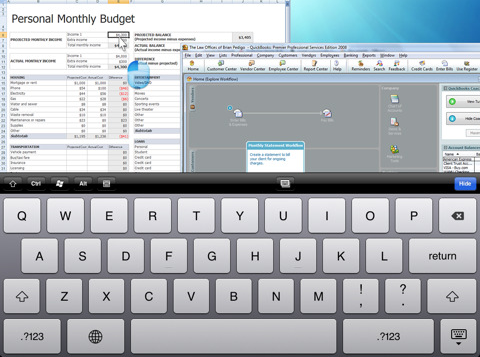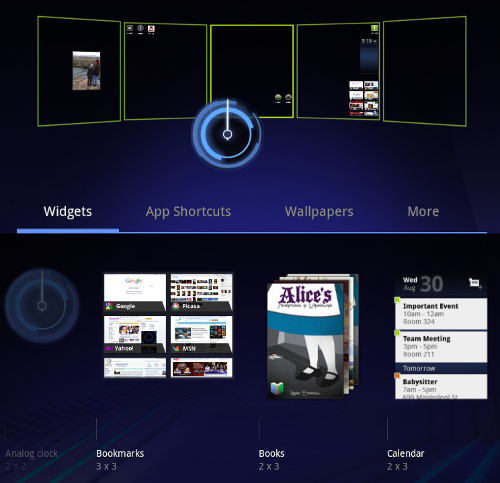By Joe Wilcox, Betanews
[Editor's Note: This was a live document from 4:20 p.m. EDT until 5:40 p.m.]
Microsoft weathered the brunt of slower-than-forecast PC sales to beat Wall Street consensus for fiscal 2011 second quarter. The software giant announced earnings after the bell, for the three-month period ended Dec. 31, 2010.
Microsoft revenue rose 5 percent to $19.95 billion, year over year. Operating income: $8.17 billion, down 4 percent. Net income: $6.64 billion, or 77 cents a share. Earnings per share rose by 4 percent year over year. However, Microsoft stated growth rates when counting a $1.7 billion deferral related to Windows 7's launch in the year-ago quarter. Without the deferral, revenue grew by 15 percent, operating income by 20 percent and earnings per share by 28 percent.
Two years ago this month, Microsoft stopped providing Wall Street analysts with quarterly and yearly guidance, in a move that is highly unusual for so large and so successful a public company. I've long argued that Microsoft's refusal to give guidance creates unnecessary negative perceptions about its performance. As such, Wall Street analysts had to rely solely on their wits to call the quarter. Average consensus was $19.14 billion revenue and 68 cents earnings per share. Revenue estimates ranged from $18.52 billion to $19.73 billion. So Microsoft topped the Street.
PC shipments hung like a shadow over Microsoft results. Fifteen days ago, Gartner and IDC reported weaker-than-expected demand during fourth calendar quarter, which coincides with Microsoft's second fiscal quarter. PC manufacturers shipped 93.5 million PCs globally, up 3.1 percent year over year, according to Gartner. The analyst firm had forecast 4.8 percent growth. IDC put the number at a lower 92.1 million and growth 2.7 percent. US PC sales declined 6.6 percent to 19.1 million, according to Gartner, which previously forecast 10 percent year-over-year growth. IDC put shipments at a higher 19.9 percent and the decline a lower 4.8 percent. Both firm's numbers are preliminary.
Both firms said that slow consumer demand, even with the holidays, contributed to actual shipments. But iPad had more tremendous impact. Yesterday, Canalys broke rank with other analyst firms by counting iPad as a PC. By that reckoning, Apple dramatically jumps to third spot in global PC market share, ahead of Dell and behind HP and Acer.
Q2 2011 Revenue by Division
- Windows & Windows Live: $5.056 billion, down from $7.193 billion a year earlier.
- Server & Tools: $4.39 billion, up 10 percent from $3.978 billion a year earlier.
- Business: $6.032 billion, up 24 percent from $4.864 billion a year earlier.
- Online Services Business: $691 million, up 19 percent from $579 million a year earlier.
- Entertainment & Devices: $3.698 billion, up 56 percent from $2.381 billion a year earlier.
The quarter represents the first for sales of Windows Phone 7 and Xbox Kinect. The company said that there were 2 million Windows Phone handsets sold in 2010, which really means shipped. Microsoft shipped more than 8 million Kinect game console controllers.
Microsoft's most immediate challenge remains mobile, where upstarts like Apple and Google body slammed Microsoft during 2009-10. But there is new competition from iPad, too. Apple shipped 7.331 million tablets during fourth calendar quarter for a total of 14.789 million in just nine months. Apple's tablet generated nearly $10 billion in new revenue during the first nine months of availability. Adding in iPhone and iPod touch, iOS devices accounted for about two-thirds of the quarter's revenue. Apple had sold 160 million cumulative iOS devices. The point: Apple is no longer dependent on Macs, which compete with overwhelming marketing-leading Windows PCs.
By most every estimate, mobiles are the future of computing, something iPad's negative impact on PC sales shows. Mobile applications are set to generate enormous revenues that may soon begin to cannibalize PC applications. Gartner predicts $15 billion revenue generated by mobile apps this year, up nearly three times from 2010.
Q2 2011 Income by Division
- Windows & Windows Live: $3.251 billion, down from $5.417 billion a year earlier (20 percent growth when adding deferral).
- Server & Tools: $1.776 billion, from $1.464 billion a year earlier.
- Business: $3.965 billion, up from $2.947 billion a year earlier.
- Online Services Business: Loss of $543 million, up from $463 million loss a year earlier.
- Entertainment & Devices: $679 million, up $365 million a year earlier.
Microsoft said that it has now sold over 300 million Windows 7 licenses (which doesn't mean all, or even most, have been deployed). Twenty percent of Internet-connected PCs now run the operating system, according to the company.
Microsoft reports revenue and earnings results for five divisons: Windows & Windows Live, Server & Tools, Business, Online Services and Entertainment & Devices.
Windows & Windows Live. Microsoft's flagship division received a double-whammy during fiscal Q2, the effects of a $1.7 billion deferral in the year-ago quarter and macro-effects in the PC market. "OEM revenue decreased $1.8 billion or 32 percent," according to Microsoft financial filings. "This decrease was driven by the prior year launch of Windows 7, reflecting a decrease in inventory in our distribution channels, and lower Windows attach rates in China, partially offset by PC market growth." As such, OEM revenue grew by 2 percent, year over year. OEM licenses declined by 5 percent. Microsoft projected PC shipment growth was between 2 percent to 4 percent.
Server & Tools. The division is most insulated against economic maladies, because about 50 percent of revenues come from contractual volume-licensing agreements; annuity revenue grew by 11 percent year over year. Additionally, enterprise services revenue grew by 9 percent, or $69 million. More broadly, revenue rose 10 percent year over year.
Business. The division was the quarter's big performer, with revenue up 24 percent year over year. Business non-annuity revenue grew by 40 percent, which isn't ideal. Microsoft benefits more when businesses buy annuity contracts, which revenue grew by just 9 percent. "Office 2010 consumer license sales more than 50 percent ahead of Office 2007 over same period following launch," according to Microsoft financial filings. "Business revenue increased $697 million or 18 percent, primarily reflecting licensing of the 2010 Microsoft Office system to transactional business customers, growth in multi-year volume licensing revenue, and a 7 percent increase in Microsoft Dynamics revenue. Consumer revenue increased $471 million or 49 percent due to sales of the 2010 Microsoft Office system."
Online Services Business. Search drove up online advertising revenue by 23 percent, that's $117 million to $632 million. Despite revenue gains, the division's loss increased from fiscal Q2 2010.
Entertainment & Devices. The division's revenue increased a whopping 56 percent year over year, or $1.3 billion. Microsoft shipped 8 million Kinects during first 60 days, which helped drive up Xbox 360 unit sales by 21 percent year over year -- 6.3 million units shipped in the quarter. Related: Xbox Live memberships increased 30 percent.
Windows Phone 7 is available in 30 countries from 60 carriers. Two million units have shipped.
[Editor's Note: Percentages corrected in "Revenue by Division"]
Copyright Betanews, Inc. 2010














